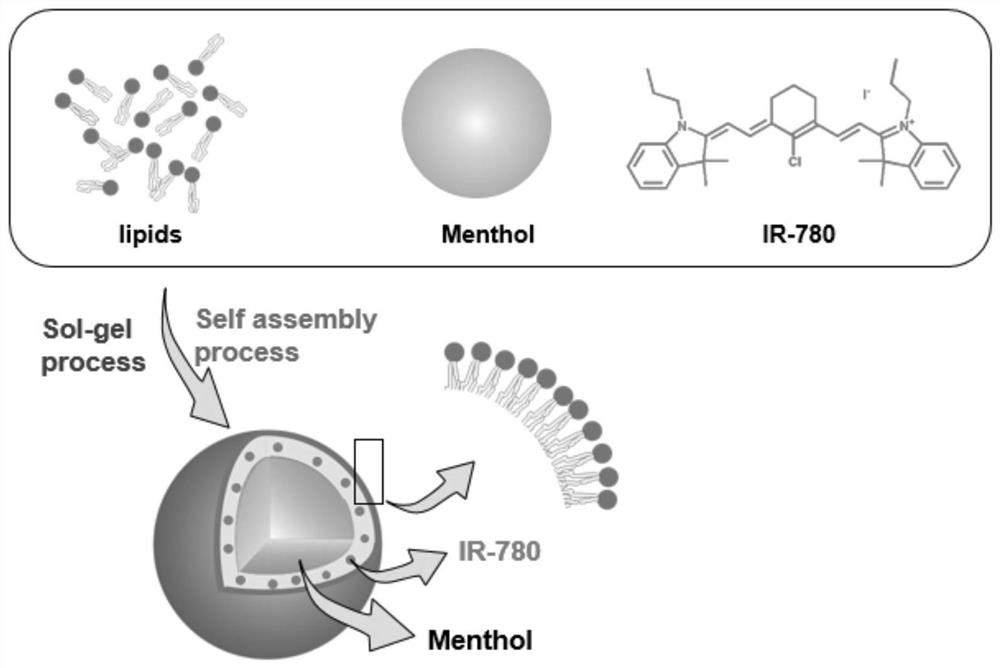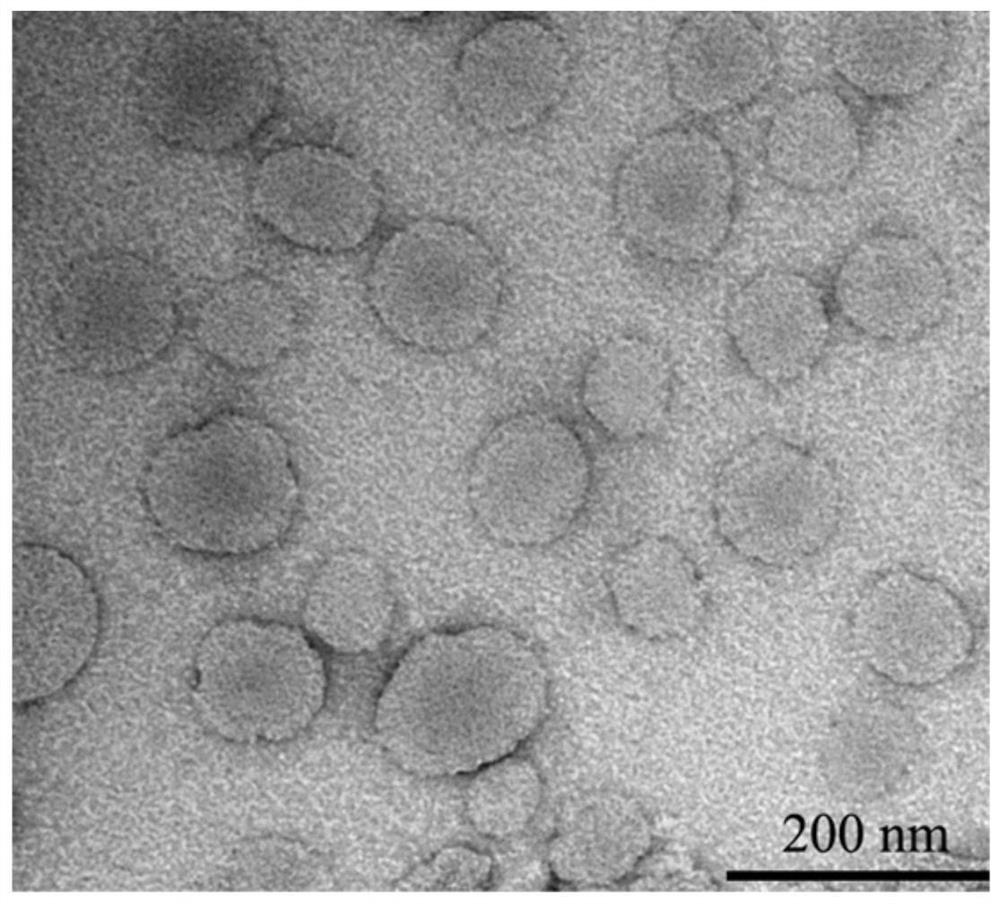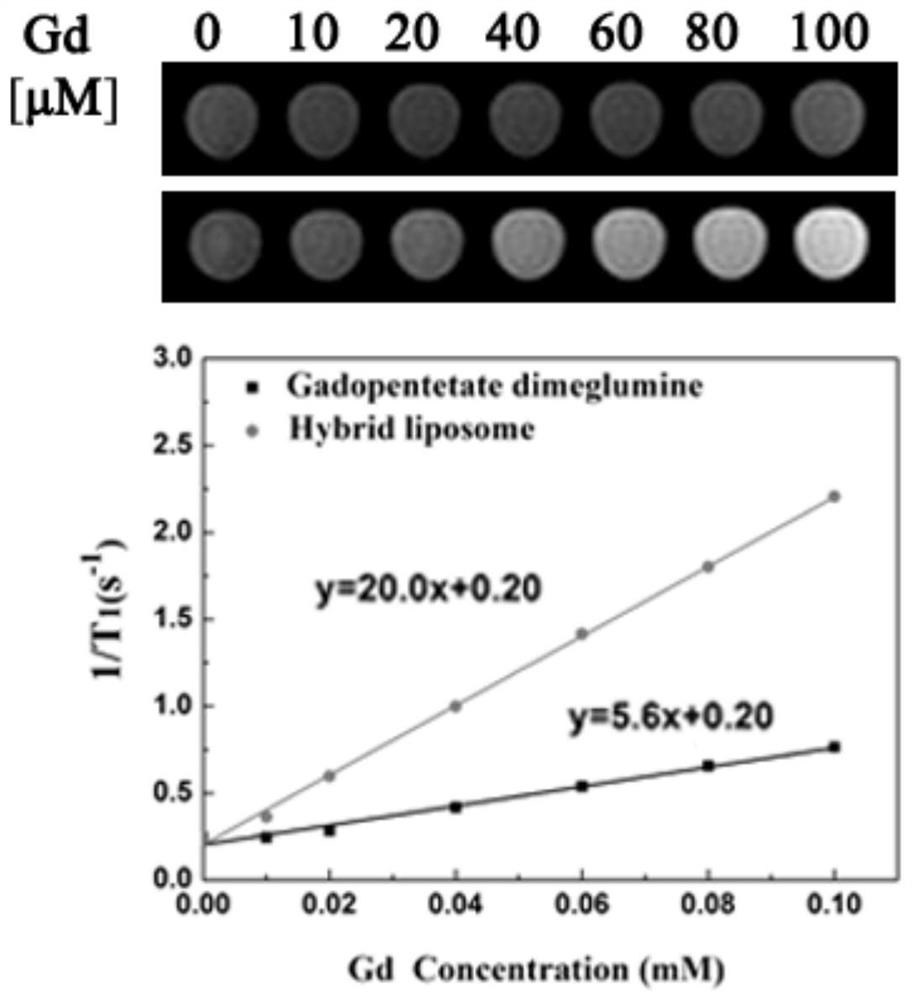A composite nano-diagnosis and treatment preparation and its preparation method
A preparation and nanotechnology, applied in the field of biomedicine, can solve the problems of large nuclear magnetic sensitivity and spatial resolution, non-dynamic, real-time imaging, low sensitivity and resolution, etc., to improve diagnostic efficiency, water solubility and biocompatibility Good and broad application prospects
- Summary
- Abstract
- Description
- Claims
- Application Information
AI Technical Summary
Problems solved by technology
Method used
Image
Examples
Embodiment 1
[0037] (1) Preparation process of DMPE-DTPA-Gd:
[0038] Dissolve 1,2-tetradecanoylphosphatidylethanolamine (DMPE) in chloroform to prepare 4 mL of a solution with a concentration of 0.1 mM. Add 30 μL of triethylamine dropwise to 20 mL of 1 mM diethyltriaminepentaacetic acid (DTPA) dissolved in dimethylsulfoxide (DMSO) and add the crosslinker 1-(3-dimethylaminopropyl base)-3-ethylcarbodiimide hydrochloride (EDC) and N-hydroxysuccinimide (NHS). The above two solutions were mixed and incubated at room temperature in an argon atmosphere for 3 h, then dialyzed in DMSO solution for 12 h (dialysis bag: MW 3500), and then dialyzed in ultrapure water for 48 h. The prepared DMPE-DTPA was lyophilized and stored.
[0039] Accurately weigh 0.384 g DMPE-DTPA, dissolve in 10 mM sodium acetate buffer solution with pH=5.8, then add 0.337 mM GdCl 3 3.1 mL of aqueous solution, the pH of the solution was adjusted to 6.5 with 1 M NaOH, and then heated at 50 °C for 5 h. After the reaction was ...
Embodiment 2
[0045] The Gd content in the Hybrid liposome composite nanoemulsion in Example 1 is detected by ICP-MS, and the original sample is diluted to a certain concentration gradient (0.01 mM / L, 0.02 mM / L, 0.04 mM / L, 0.04 mM / L, 0.06 mM / L, 0.08 mM / L, 0.1 mM / L), and perform MRI imaging on the MRI system. The result is as image 3 As shown, with the increase of the concentration of Hybrid liposome composite nanoemulsion, the enhancement effect of T1 contrast becomes more and more obvious. According to the quantitative fitting results, it can be judged that when the concentration of the composite nanoemulsion reaches 100 μg / mL, the NMR image shows that the relaxation time T1 is significantly reduced. The shorter the relaxation time T1 and the larger the relaxation rate r1, the stronger the contrast ability of the material. Compared with the commercial MRI contrast agent gadopentetate dimeglumine, its relaxation rate is 3-4 times that of the commercial contrast agent. It can be seen tha...
Embodiment 3
[0047] After diluting the Hybrid liposome composite nanoemulsion and free IR-780 in Example 1 to a certain concentration (distilled water was used as a blank control), it was detected by a UV-spectrophotometer to obtain a UV-visible absorption spectrum. like Figure 4 As shown, pure IR-780 and Hybrid liposome composite nanoemulsion have strong near-infrared absorption in the near-infrared range of 790 nm-770. After being coated with menthol and phospholipids, the longitudinal absorption peak has a slight blue shift. This is because the surrounding menthol and phospholipid spherical cavity changes the refractive index of the medium, which causes the resonance absorption wavelength to blue shift. The above results show that the Hybrid liposome composite nanoemulsion well retains the optical absorption properties of IR-780.
PUM
| Property | Measurement | Unit |
|---|---|---|
| particle diameter | aaaaa | aaaaa |
| particle diameter | aaaaa | aaaaa |
| particle diameter | aaaaa | aaaaa |
Abstract
Description
Claims
Application Information
 Login to View More
Login to View More - R&D
- Intellectual Property
- Life Sciences
- Materials
- Tech Scout
- Unparalleled Data Quality
- Higher Quality Content
- 60% Fewer Hallucinations
Browse by: Latest US Patents, China's latest patents, Technical Efficacy Thesaurus, Application Domain, Technology Topic, Popular Technical Reports.
© 2025 PatSnap. All rights reserved.Legal|Privacy policy|Modern Slavery Act Transparency Statement|Sitemap|About US| Contact US: help@patsnap.com



